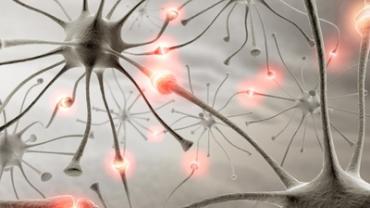
The physiological and biochemical changes that result from the buildup of advanced glycation end products (AGEs) contribute to many of the myriad debilitating and ultimately fatal complications of poorly managed type-2 diabetes and chronic hyperglycemia. Neuropathy retinopathy nephropathy cardiovascular disease and Alzheimer’s disease are among the long list of frightening conditions that may result from glucose and fructose non-enzymatically binding to proteins resulting in altered structure and function. Reduced-carbohydrate diets increased physical activity stress management and combinations of pharmaceutical drugs and targeted supplementation can all have a significant impact on lowering blood glucose and improving insulin sensitivity. For patients who struggle with implementing and maintaining these changes however any additional help would be welcome. The compound called benfotiamine falls into this category.
If the last half of the word benfotiamine looks familiar it’s because this compound is in fact a derivative of thiamine (vitamin B1). Like all B vitamins thiamine is water-soluble which makes it somewhat difficult to effectively raise plasma levels of this nutrient since excess amounts will be excreted. Benfotiamine (S-benzoylthiamine O-monophosphate) is a synthetic derivative of thiamine which is metabolized into lipid-soluble S-benzoylthiamine. Plasma levels of thiamine may be as much as five times higher after oral supplementation with benfotiamine the bioavailability of which is more than three times higher than that of thiamine hydrochloride.
Higher plasma levels of benfotiamine may be desirable for reducing the formation of AGEs thereby ultimately slowing or preventing the progression of diabetic complications. One of the mechanisms by which benfotiamine affects intracellular AGE accumulation is by activating the enzyme transketolase (TK) which shunts AGE precursors toward the pentose phosphate pathway (PPP) rather than having them build up in the cytosol. (Specifically TK directs excess fructose-6-phosphate and glycerhaldeyde-3-phosphate from glycolysis into the PPP.) Moreover thiamine is a cofactor for the pyruvate and α-ketoglutarate dehydrogenase enzyme complexes which are involved in carbohydrate metabolism via glycolysis and the citric acid cycle. Diabetics are frequently thiamine-deficient which results in a decrease in TK activity.
Animal and in vitro studies show that benfotiamine has an impressive ability to normalize some of the symptoms associated with type-2 diabetes and chronic hyperglycemia such as diuresis and glucosuria as well as elevated triglycerides and blood cholesterol. The potential therapeutic effects of benfotiamine are so powerful that one study author concluded “…even mild thiamine deficiency in diabetes should be avoided and thiamine supplementation to high dose should be considered as adjunct nutritional therapy to prevent dyslipidemia and the development of vascular complications in clinical diabetes.”
Rat models of diabetes show that benfotiamine supplementation prevented tissue AGE accumulation and increased urinary excretion of protein glycation precursors. Oral supplementation with benfotiamine in subjects with type-1 and type-2 diabetes resulted in significant reductions in perceived pain due to polyneuropathy. It may be that a high dose of the compound is required to exert an effect as an intervention of 400 mg benfotiamine/day led to reduced neuropathic pain but type-1 diabetics given 300 mg/day experienced no change in this symptom.
Beyond the debilitating and sometimes deadly downstream effects of poorly managed type-2 diabetes impaired glucose dynamics in the body may have substantial influence on brain function. It is now understood that Alzheimer’s disease stems primarily from altered cerebral glucose metabolism. Mouse models of this neurodegenerative condition show that benfotiamine supplementation improves spatial memory and cognitive function. This may be due to increased plasma thiamine levels facilitating proper glucose metabolism as well as the role of benfotiamine in reducing the deposition of amyloid plaques which interfere with neuronal signaling. Researchers note that “reductions in thiamine-dependent processes are highly correlated to the decline in clinical dementia rating scales. In animal models thiamine deficiency exacerbates plaque formation promotes phosphorylation of tau and impairs memory.” Considering the impressive effects of benfotiamine supplementation on reducing or preventing diabetic retinopathy vascular damage and other long-term effects of perturbed inter- and intracellular glucose concentrations perhaps future research will establish a beneficial role for this compound in reducing or delaying the ravages of Alzheimer’s for which there is currently no effective treatment.
The molecular mechanisms of benfotiamine indicate it may be a helpful addition to the supplement regimens of diabetics and others with chronically elevated blood glucose particularly if they continue to experience increased neuropathy retinopathy and other effects of rampant AGE formation despite pursuing diet lifestyle and pharmaceutical interventions.